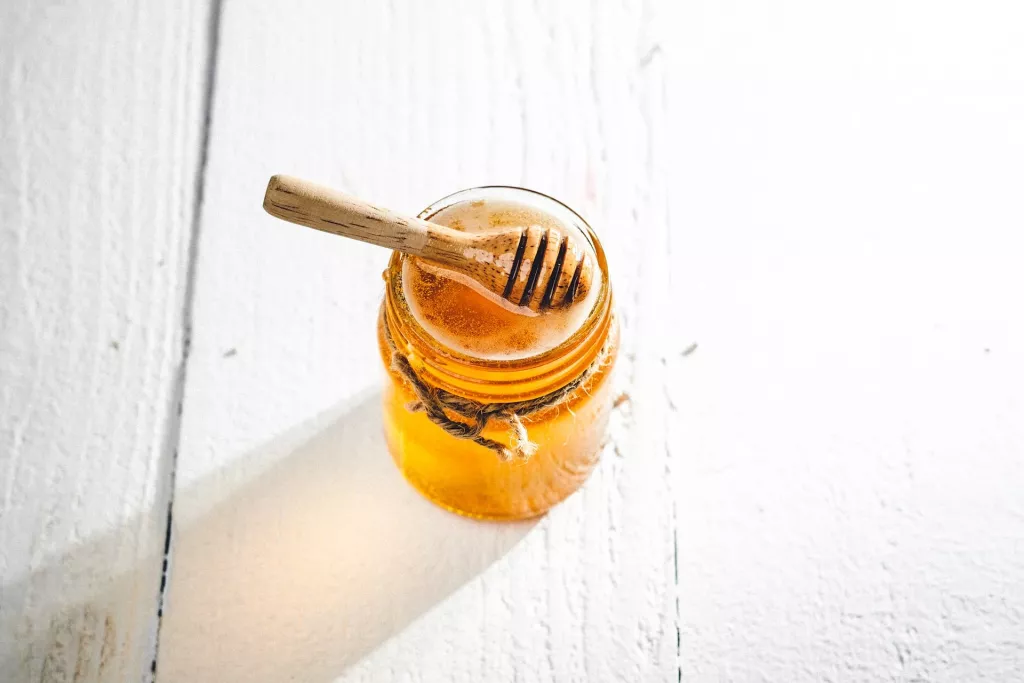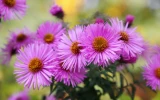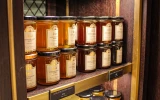It Takes Longer Than You Think to Harvest Honey
One of the best moments of a novice beekeeper's career is the first honey harvest. After all, it's an affirmation of their efforts. Here's a look at how the harvest happens.
From collecting the honey to extracting and allowing the liquid to settle, the entire process should take two to three days for most hobbyists and small-scale beekeepers. Remember to be fully equipped and work slowly. Your bees won't be happy they have to give up some honey.
Since it takes the entire lifetime of 12 bees to make just one teaspoon of honey, it's understandable how honeybees are protective of their resource. Learning how to harvest honey will take plenty of time, effort, and patience. I'll explain how you can prepare for your first harvest so you can get as much honey as possible without harming yourself or the bees.
Summary
- Have realistic expectations about how soon and how much honey you can harvest. Hives need around 40 to 60 pounds of honey to get through the winter. This figure may increase for regions with long and cold winters. and decrease in warmer areas with shorter winters.
- One colony in a fertile region can yield roughly 50 pounds of honey each year.
- Try going with an experienced beekeeper for your first harvest. Honey is a precious resource and it will be heavily guarded!

On this page:
How to Harvest Honey
Honeybees structure their lives according to the season and climate of their region. Contrary to popular belief, they do not produce honey all year round in most regions. If you are a new beekeeper, then you won't be able to harvest honey until the second year either. This is because bees don't have the manpower and strength to produce enough excess honey for human consumption when they're still so busy establishing themselves in their first year.
The amount of honey produced also depends on where you are based. Ideally, beekeepers should set up their apiaries in tropical climates and heavily forested areas, near plenty of local flora that provide enough variety to ensure that there are plants blooming throughout the spring, summer, and fall.
Additional tools for new beekeepers
When you're just starting out, chances are you'll be working with the basics: beekeeping gear, hive tools, and a veil. As you approach your first harvest, consider investing in more tools to help facilitate the experience. This can include a fume board, where bee repellent is applied to the underside and then placed above the honey supers; an uncapping knife, cheesecloth, a manual or electric honey extractor, or a simple cheesecloth and tub.
You'll also need jars and containers to store the honey after it's been processed.
Collecting the honey
The honey super is an extra hive box filled with frames of pre-formed honeycomb. Once honeybees have filled the honey super and sealed the comb, the honey is ready to be harvested. it's important that you only take the excess, or whatever's been produced in the extra honey super.
A smoker and fume board can help facilitate the honey harvest. If you are new to beekeeping, it is likely that you have a smoker but not a fume board. The latter looks like a regular outer hive cover that goes on top of the honey super you want to harvest. The difference is that it contains an absorbent material that's been sprayed with a non-toxic solution on the inside. This solution repels bees and makes them move away from the honey super. As a result, you can remove the box of honey with ease.
Smokers can also pacify the colony, but be careful; using too much while harvesting will affect the taste of the honey.
Extracting the honey
Once you've removed the honey super and brought it to a bee-free location, you can start removing the honey. Use a hot knife to cut of the wax capping and set them aside. This gives you immediate access to the warm, syrupy honey that your bees worked so hard to make!
There are two different ways to get the honey. You can use a honey extractor to separate the liquid. These are machines that use centrifugal force to remove the honey from the comb without destroying the comb, and they come in manual and electronic models. It allow beekeepers to reuse the frame in the honey super.
Another method is to cut the comb out of the frame, crush it, and strain the honey through cheesecloth. The beeswax can be processed and made into candles or other products.
Once the honey has been extracted, it is left to settle for several days in a closed container. This gives time for air bubbles and any remaining wax debris to float to the top of the surface. You can then skim it off the top or use cling wrap to remove it. Afterwards, it is ready to bottle.

Tips for Harvesting Honey
Move slowly and carefully
Suit up, gather all your tools, and move slowly with your hive. Don't try rushing the process. You might end up making mistakes and harming your bees.
Go with an experienced beekeeper
Reach out to your local Beekeeper's Association and see if you can get a veteran beekeeper to accompany you on your first harvest. Remember, you're harvesting a precious resource that the bees have worked on all year, and they'll be needing it to get through the winter. They won't be happy to know you're taking any of their stores!
Avoid wearing fragrances
Take a shower beforehand and avoid wearing perfumes, colognes, or other scented products, because foreign scents attract the bees and encourage them to fly towards you. They may interfere with your work.
How Much Honey Should I Harvest?
Established colonies will have anywhere between 25 to 100 pounds of excess honey in a successful year. This is a wide margin because the production of excess honey depends on a variety of factors.
Colony health
If your honeybees have had to survive multiple infestations or fend off unwanted guests, then they may not have made enough excess honey for you to harvest. As a beekeeper, you need to ensure that you closely monitor your bees' health and set up their hives in a safe area. Natural means of eliminating mites and other diseases are also preferred, as chemical treatments can have various side effects on the colony in the long run.
Location
If you live in the northern part of the United States, your colony likely has shorter foraging periods and lower yields. The opposite is true for apiaries in the south, where the longer blooming seasons often allow for bigger honey yields. However, there are some exceptions to this rule. In drier areas where there is a lack of nectar-producing flora, honeybees may still experience difficulties with reaching maximum honey production.
Climate and region
If this year has been particularly rainy in your area, your honeybees may not have had enough time to forage and find the nectar they need to produce honey. Climate change has led to a series of bad and unpredictable weather spells around the world, and this has had a direct impact on honeybees.
Type of hive
Langstroth hives are the most common manmade structures used to house honeybees for a reason! They have a large cavity and can easily be expanded to accommodate seasons with heavy nectar flow. Conversely, top bar hives have a fixed cavity size and won't be capable of producing as much. Warre hives fall somewhere between both types in terms of harvest.

How Many Times Can I Harvest Honey in a Year?
Most beekeepers can harvest honey two to three times per year, between the months of June and September. Keep in mind that differences in weather conditions, diseases, and pests may have an impact on your hive's capacity to produce honey in time for the season. In addition, you should only take excess honey from the hive.
How Long Can I Store Honey Supers Before Removing Honey?
Capped honey frames can be stored for two to three days at most. However, you need to make sure they are wrapped securely and kept in a place where it is out of reach from bugs, pests, and hungry animals. If you need to store it for longer, then have the frames frozen.
Do I Need to Seal the Honey Jars?
No. Honey is antimicrobial and highly acidic, so honey jars do not need to be sealed when bottled. You can opt to do so if you plan on selling plenty of honey, as it prevents leaks and ensures potential buyers that the product has not been tampered with.
Should I Heat the Honey Before Bottling It?
It's not necessary, but some large-scale honey producers do warm their honey throughout the extraction process. This is done to make honey easier to filter and ensure that crystallization does not happen. However, as long as your honey is kept somewhere between 32 to 28 degrees Celsius, then it will not crystallize until it is bottle.
Most hobbyists and small-scale beekeepers just transfer freshly-harvested honey into jars before it has a chance to crystalize. It's fast, simple, and attractive to consumers who prefer raw, natural honey.


